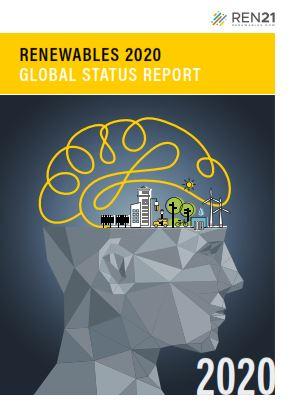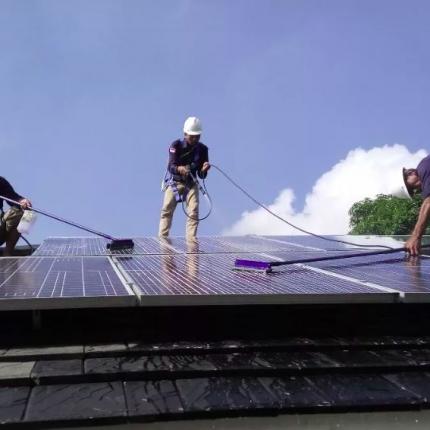Renewables 2020 : Global Status Report
FOREWORD
Every year, we launch the Renewables Global Status Report (GSR) to present the latest data and facts on renewable energy policies, markets and investments. This year, however, something is different. We collectively witnessed the adoption of immediate and drastic measures in response to the COVID-19 pandemic. Ensuing lockdowns and economic consequences have disrupted everyone’s lives.
Time seems to be separated into a pre-COVID and a post-COVID period. Energy supply and demand have been disrupted, and carbon dioxide emissions fell. In such unprecedented times, stepping back to look at what happened in the renewable energy sector in 2019 may seem counterintuitive. But we need to do this.
It’s clear that we need to study the global picture with a long-term view to make the right decisions going forward. If we don’t, we risk getting sidetracked by a short-term perspective. As disruptive as COVID-19 has been, the crisis does not alter observable trends in the energy sector that have persisted for years. The truth remains: we need to enact a structural shift built on an efficient and renewable-based energy system if we want to decarbonise our economies.
Many of the same themes from prior years resurfaced again in GSR 2020. Year after year, we have reported success in the renewable power sector. And year after year, we have reported that renewables lag in other end-use sectors like heating, cooling and transport, and that these sectors suffer a lack of policy support. We need to report about successes as well as take a more critical look at areas where progress is weak, to enable better decision making and advance the uptake of renewables.
In the effort not only to provide accurate data but also to advance renewables in areas of weaker historic progress, GSR 2020 is different from former editions. Rather than only tracking support for renewables broadly, we decided to actively address the disconnect in progress among sectors. You will find some new figures and the start of ongoing data tracking on renewable energy policies, generation and use in different end-use sectors. We hope that this more specific look at each end-use sector (Buildings, Industry and Transport) will provide information needed to make better decisions.
At the halfway point of 2020, we find ourselves in a period of global flux. We are also in a moment of increasing consciousness: public support for renewables is at an all-time high, and many people are becoming more aware of the various benefits of renewable energy. Let’s seize this unique moment to create lasting policies, regulations and targets, and an environment that enables the switch to an efficient and renewable-based energy system. Globally. Now.
Some things don’t change, even after COVID-19. As with all REN21 publications, GSR 2020 is the product of a collaborative process built from an international community of renewable energy contributors, researchers and authors. This year’s report consolidates data from more than 350 experts to provide an up-to-date snapshot of the state of play of renewables. On behalf of the REN21 Secretariat, I would like to thank all those who contributed to the successful production of GSR 2020. Particular thanks go to the REN21 Research Direction Team of Hannah E. Murdock, Duncan Gibb and Thomas André; Special Advisors Janet L. Sawin and Adam Brown; the chapter authors; our editor Lisa Mastny; and the entire team at the REN21 Secretariat.
We sincerely hope that GSR 2020 will contribute to important changes in the near future.
Rana Adib
Executive Director, REN21
June 2020
original source : www.ren21.net/reports/global-status-report/







